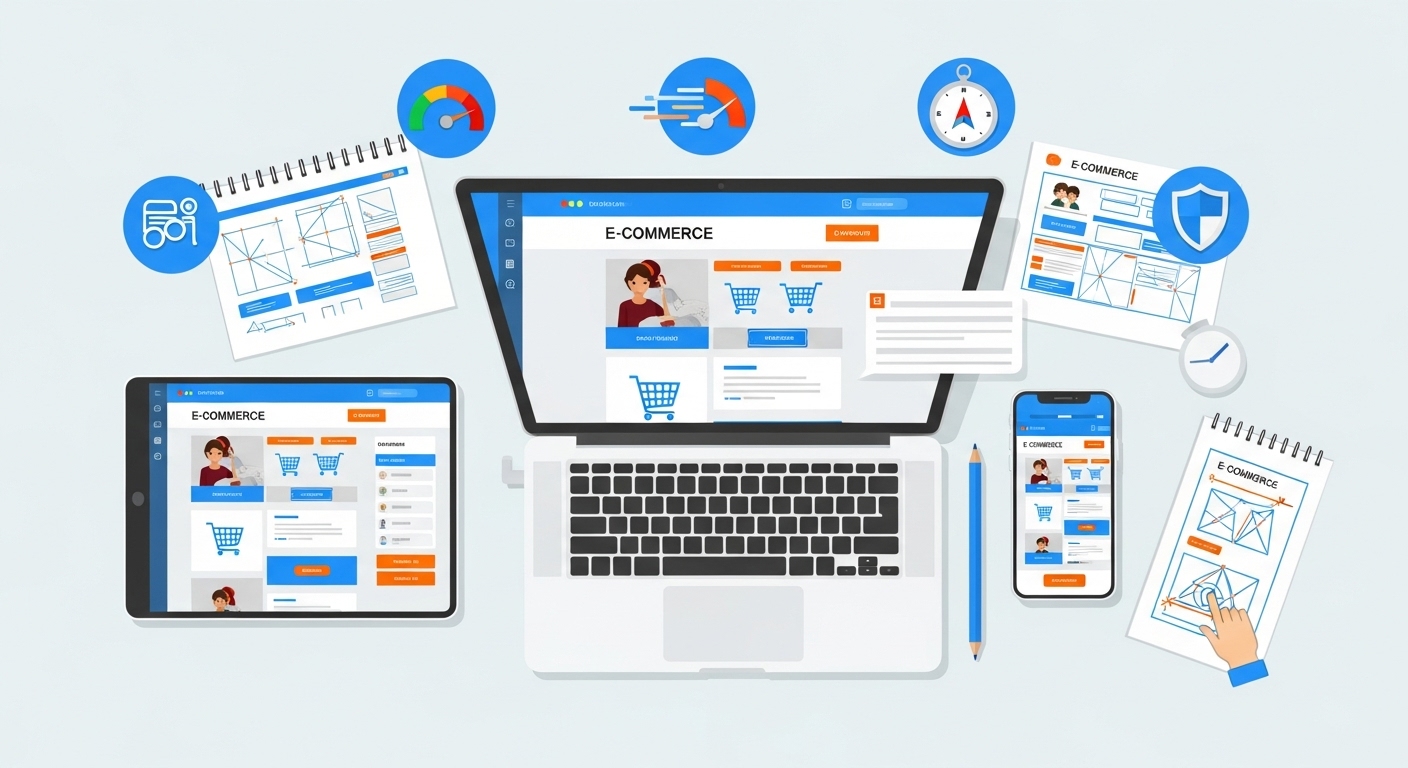In today’s digital-first world, the way users experience your website determines whether they buy from you—or bounce within seconds. With more than 70% of online shoppers using mobile devices, adopting a mobile-first design strategy is no longer optional; it’s essential.
At The Media Buddies, we’ve seen first-hand how mobile-optimized design can dramatically increase engagement, improve user experience, and ultimately boost online sales. Let’s explore why mobile-first design matters, how it impacts eCommerce success, and what businesses can do to stay ahead in 2025.
What Is Mobile-First Design?
Mobile-first design is a web development approach that prioritizes the mobile user experience before scaling up to larger screens like tablets and desktops. Instead of designing for desktop and then adapting for smaller screens (known as “graceful degradation”), the mobile-first method starts small and builds up—ensuring your site is fast, responsive, and user-friendly on any device.
This design philosophy aligns perfectly with today’s consumer behavior. Mobile traffic now accounts for over 60% of all eCommerce sales, and shoppers expect quick load times, simple navigation, and seamless checkout experiences.
Why Mobile-First Design Matters for eCommerce

Improved User Experience (UX):
Mobile-first websites are built for clarity and simplicity. Large buttons, readable text, and intuitive layouts help users easily browse and purchase products. A frictionless UX reduces bounce rates and builds trust—both critical for eCommerce success. When visitors find your site easy to use, they’re more likely to complete a purchase. Studies show that a one-second delay in page load time can reduce conversions by 7%. Mobile-first optimization ensures that doesn’t happen.
Higher Conversion Rates:
Every touchpoint in the buying journey—searching, browsing, adding to cart, and checking out—must be smooth on mobile. A mobile-first design removes barriers like long forms or unclickable buttons, leading to higher conversion rates. In fact, businesses with responsive, mobile-optimized websites report up to a 30% increase in sales conversions compared to those with desktop-first designs.
Better SEO Rankings:
Google uses mobile-first indexing, meaning it primarily crawls and ranks your site based on the mobile version. If your site isn’t optimized for mobile, you’re already losing visibility. Mobile-friendly websites have faster loading times, better accessibility, and improved usability—all ranking factors that help your store climb higher in search results and attract organic traffic.
Enhanced Customer Engagement:
Mobile users scroll differently, interact faster, and expect quick access to content. Mobile-first design accommodates this behavior with optimized menus, responsive imagery, and short, engaging CTAs. The result? Lower bounce rates, longer session times, and a stronger emotional connection between your brand and audience.
Competitive Advantage
Despite the importance of mobile optimization, many small and mid-sized businesses still rely on outdated desktop-first designs. By adopting mobile-first principles, your brand can stand out, improve user retention, and outperform competitors in both traffic and revenue.
Key Elements of a Mobile-First eCommerce Website

To get the most out of mobile-first design, focus on these core principles:
1. Responsive Layout
Your website must automatically adjust to any screen size. Tools like CSS Grid, Flexbox, and responsive frameworks (such as Bootstrap or Tailwind CSS) make this easy to implement.
2. Fast Loading Speed
Mobile users expect instant results. Optimize your site by compressing images, reducing unnecessary code, and using a content delivery network (CDN). Google recommends a page load time under 2.5 seconds for mobile devices.
3. Simplified Navigation
Minimal menus, clear product categories, and visible call-to-action buttons help users find what they need faster. Avoid clutter—every second counts in mobile browsing.
4. Optimized Checkout Process
A lengthy checkout process is one of the main causes of cart abandonment. Use autofill, guest checkout, and mobile payment integrations like Apple Pay, Google Pay, or PayPal One-Touch to simplify transactions.
5. Touch-Friendly Design
Ensure all interactive elements (buttons, menus, sliders) are large enough to tap easily on smaller screens. A touch-friendly interface prevents frustration and improves usability.
6. Visual Optimization
Mobile screens require smart use of visuals—optimized images, scalable icons, and compressed videos. Using lazy loading can improve page speed and reduce bounce rates.
The Business Impact: From Traffic to Sales
When businesses adopt a mobile-first eCommerce strategy, the results are measurable:
- Higher Engagement: Users spend more time exploring your products.
- Reduced Bounce Rates: Visitors are less likely to leave after viewing one page.
- Improved SEO Performance: Better rankings mean more organic visitors.
- Increased Conversion Rates: Simplified user journeys lead to more sales.
- Better Customer Retention: A seamless mobile experience encourages repeat buyers.
At The Media Buddies, we’ve helped brands reimagine their digital presence by implementing mobile-first web design strategies. From optimizing landing pages to designing responsive product catalogs, we’ve seen mobile-first design consistently drive higher conversion rates and ROI for our clients.
How to Get Started with Mobile-First Design
If your website isn’t already optimized for mobile users, now is the time to act. Here’s a quick roadmap:
- Audit Your Current Website: Identify mobile usability issues, speed bottlenecks, and UX flaws.
- Prioritize Mobile Layouts: Start all new design projects from the smallest screen size.
- Test Across Devices: Use Google’s Mobile-Friendly Test and Lighthouse tools.
- Optimize Content: Use concise copy, clear headings, and mobile-friendly images.
- Monitor Analytics: Track mobile traffic, engagement, and conversion rates using Google Analytics or Hotjar.
Mobile-first design isn’t just a web trend—it’s a long-term strategy for eCommerce growth.
It’s Time to Think Mobile-First — and Customer-First
In 2025 and beyond, your website’s mobile performance will directly determine your sales potential. Customers no longer tolerate slow, clunky mobile experiences. They expect seamless design, instant loading, and effortless navigation.
By embracing a mobile-first design strategy, you’re not just keeping up with technology—you’re putting your business in front of more customers, converting more visitors, and building a stronger digital brand.
At The Media Buddies, we specialize in mobile-first web development, eCommerce marketing, and digital strategy that help businesses grow in the mobile era.
Schedule Your Free Consultation Now!
- Contact Us: https://themediabuddies.com/contact/
- Email: hi@themediabuddies.com
- Phone: 07361750973
Disclaimer: This blog is for general information only and does not constitute professional advice. The media buddies accept no liability for any loss arising from reliance on its content — please seek tailored advice before making decisions.

